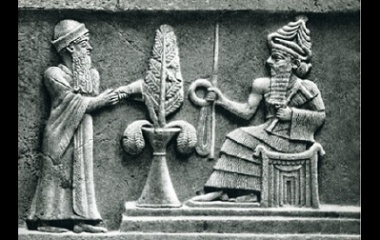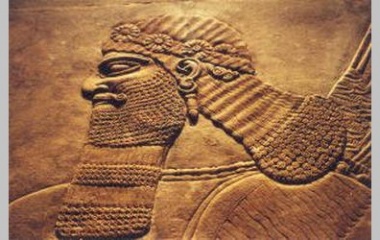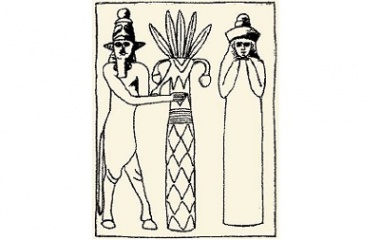- Pronunciation: en-lil
- Origin: Nippur, Mesopotamia
- Role: God of storms
- Symbols: Crown with horns
- Parents: Ansar and Kisar
- Wife: Ninlil
- Children: Nanna, Ninurta, Nisaba, Pabilsag, Namtar
Who Is Enlil?
Enlil was the Mesopotamian god of the atmosphere and ruler of the skies and the Earth. Enlil was also known as the lord of the wind and the air. He was the child of Ansar and Kisar, the very first set of gods and descendants of primordial beings. Enlil, along with Anu, and Enki, made up the trinity that ruled over the heavens, the Earth and the seas.
It is said he was so powerful that even the other gods could not look at him. His temple in Nippur, which is now south-eastern Iraq, was known as Ekur, or house of the mountain.
Origin
Enlil held the “tablets of destiny”, and therefore had power over all of the cosmos and of all of the people. He controlled the prosperity of the land and was credited with the invention of the plow.
In the legends, Enlil assigned Anzu, a massive bird who breathes fire, to guard his bathing chamber. While in the bath, the demon bird steals the tablets of destiny and flies to the top of a mountain to hide them. Enlil’s brother Anu, the chief of the gods, sends a posse of gods to retrieve the tablets and kill Anzu.
Perhaps one of the most famous myths of the storm god is the story of Enlil and Ninlil. He comes across the grain goddess Ninlil while she is bathing. Enlil, having all the charisma and character of a conceited adolescent god, forces himself on her. As punishment for the rape of a goddess, he is banished to the underworld by the council of Anunnaki gods.
Realizing she is pregnant with the child of a very important god, Ninlil decides to follow Enlil down to the underworld. She disguises herself three times and meets with Enlil in each disguise. Each time, he has to beg for her affections and each time she eventually agrees. As the myth continues, he learns to control himself, and court her properly. She learns her worth as a woman and as a goddess. Their first child is born, and is known as Nanna, the god of the moon. The family ascends from the underworld and lives happily ever after.
The myth seems to represent the cycle of crops, beginning with pollination by the wind. The birth and ascent from the underworld represent the cycle and rejuvenation of the crops.
Family of Enlil
The parents of Enlil are Ansar and Kisar, the first gods who were created by the primordial beings Apsu and Tiamat.
In addition to Nanna, the god of the moon, Enlil and Ninlil had several other children. Their offspring include Ninurta, the god of hunting and war; Nisaba, the goddess of learning and writing; Pabilsag, the Patron god of the city of Larak; and Namtar, the god of destiny and death.
Historic Influence
According to the Sumerian religion, Enlil was the most active god in the pantheon. He controlled the destiny of the world, created the storms, and was the overseer of agriculture.
He also created Labbu, the featured character in the myth, The Slaying of Labbu, presumably to wipe out humanity because the people were making too much noise and disturbing his sleep.
Enlil was also the creator of the great flood in the Epic of Gilgamesh. This was a fairly easy task for him, since he controlled the weather. Later, he regretted that decision, and gave Utnapishtim (the Sumerian Noah), who saved all the earthly species, the gift of immortality.
Modern Influence
One of the greatest advances in humanity following the creation of tools and fire was agriculture, which presumably began in Mesopotamia and was overseen by the god Enlil. This ancient agriculture dates as far back as 10,000 years. The development of irrigation canals freed people to settle in new areas and enabled them to grow food as an alternative to the hunting and gathering lifestyle. One of the first areas to take advantage of these advances was the area of southern Iraq, Nippur, where the cult center of Enlil is located. This region also was one of the first to domesticate goats, sheep and other animals.
Once they had farms and cities, everything became more complicated and there was a need to keep track of things, which lead to the need for a written language.
If we consider the gifts of the ancient Mesopotamian culture that so greatly affect our modern lives, it’s easy to see why Enlil held so much of the power in the religious life of the Sumerians.










